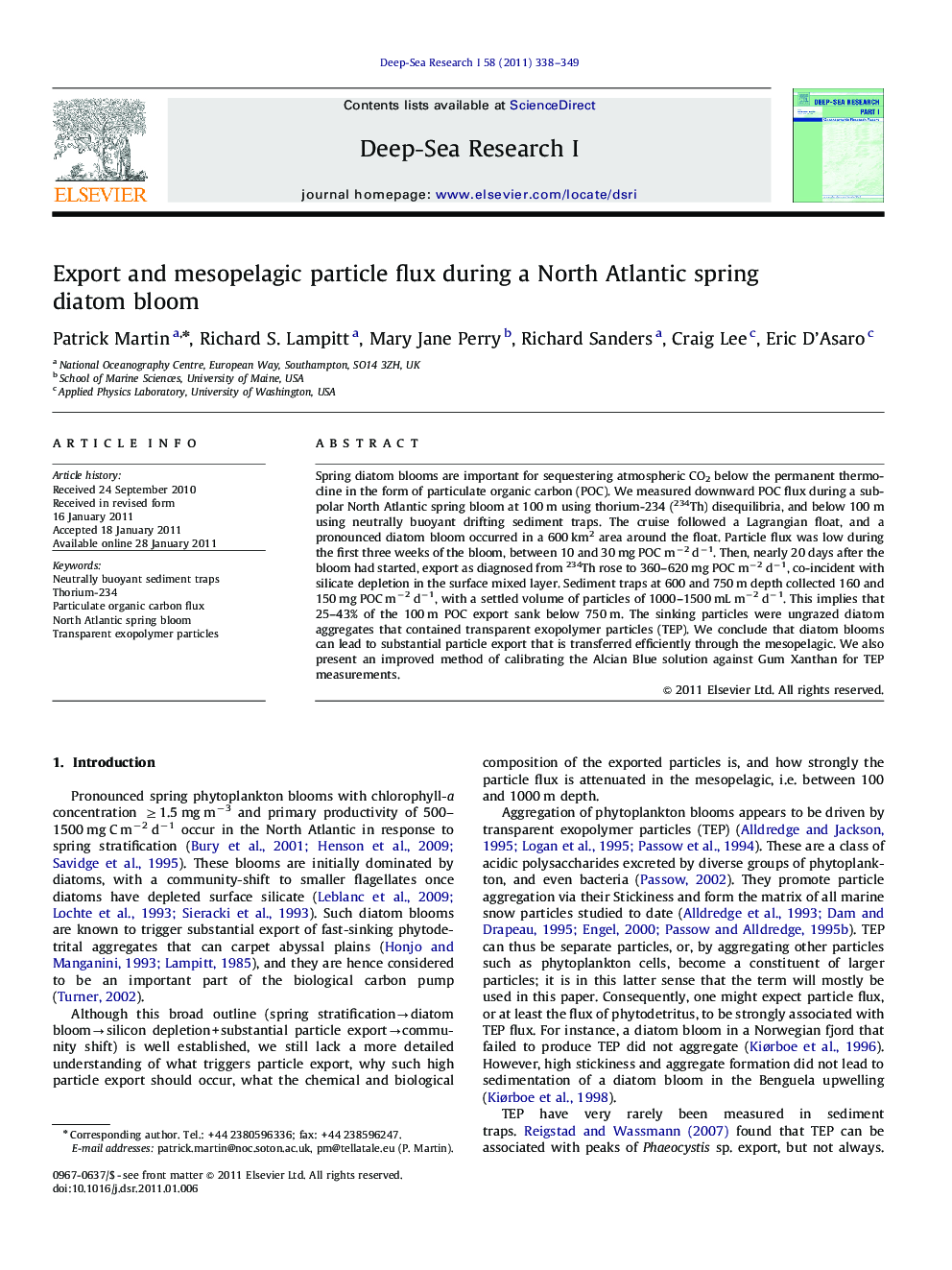| Article ID | Journal | Published Year | Pages | File Type |
|---|---|---|---|---|
| 4534865 | Deep Sea Research Part I: Oceanographic Research Papers | 2011 | 12 Pages |
Spring diatom blooms are important for sequestering atmospheric CO2 below the permanent thermocline in the form of particulate organic carbon (POC). We measured downward POC flux during a sub-polar North Atlantic spring bloom at 100 m using thorium-234 (234Th) disequilibria, and below 100 m using neutrally buoyant drifting sediment traps. The cruise followed a Lagrangian float, and a pronounced diatom bloom occurred in a 600 km2 area around the float. Particle flux was low during the first three weeks of the bloom, between 10 and 30 mg POC m−2 d−1. Then, nearly 20 days after the bloom had started, export as diagnosed from 234Th rose to 360–620 mg POC m−2 d−1, co-incident with silicate depletion in the surface mixed layer. Sediment traps at 600 and 750 m depth collected 160 and 150 mg POC m−2 d−1, with a settled volume of particles of 1000–1500 mL m−2 d−1. This implies that 25–43% of the 100 m POC export sank below 750 m. The sinking particles were ungrazed diatom aggregates that contained transparent exopolymer particles (TEP). We conclude that diatom blooms can lead to substantial particle export that is transferred efficiently through the mesopelagic. We also present an improved method of calibrating the Alcian Blue solution against Gum Xanthan for TEP measurements.
Research Highlights► Particle flux started upon impending silicate depletion in the surface mixed layer. ► Exported particles were phytodetritus rich in transparent exopolymer particles, TEP. ► Particle flux was transferred efficiently through the mesopelagic.
